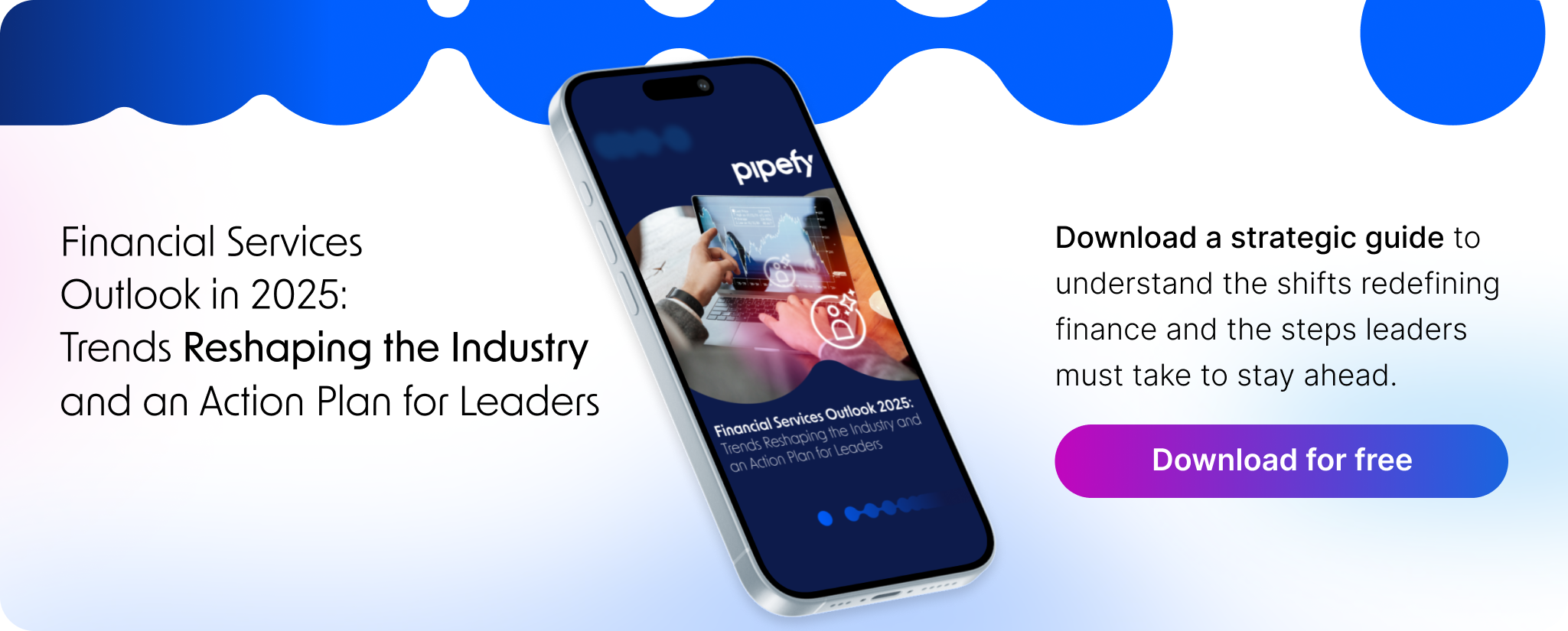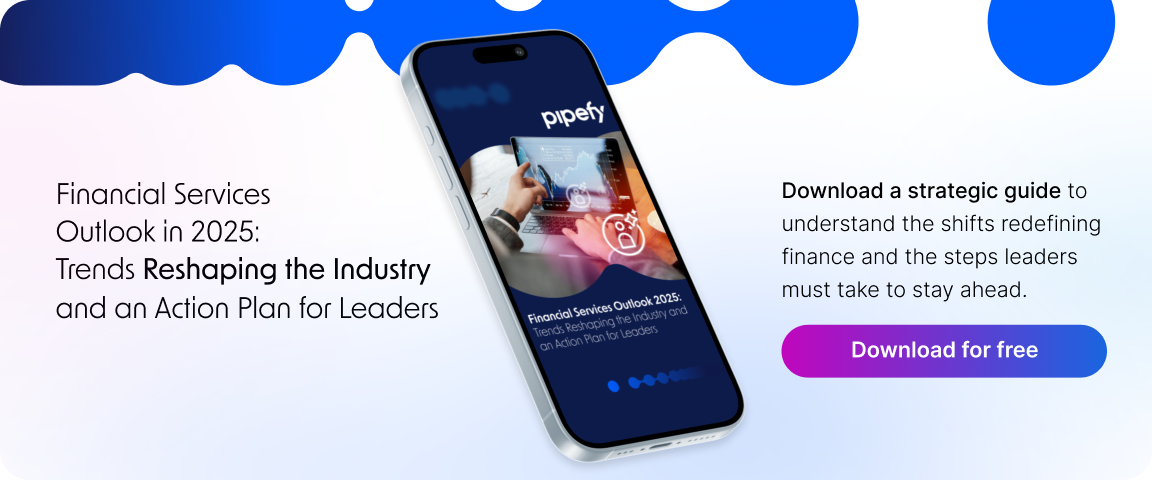
Back office operations are invisible to customers, but they’re an essential part of all businesses. They serve a supporting role, allowing front office departments to function at optimal productivity.
In the current age of digital transformation, back office solutions can be the key to reducing operating costs and adding value.
This guide explores back office functions, business process outsourcing (BPO), and back-office processes that can be streamlined for efficiency.
Streamline your business processes with the Definitive Guide to Business Process Automation
What is the back office?
Organizations are made up of several departments, but only two main operational systems. These systems are known as the back office and the front office. back office business processes support the customer-facing business processes or front-office processes.
The key difference between these two systems is that the back office serves as a business’s cost center, whereas the front office generates revenue.
In other words, the back office supports while the front office generates. Together, both drive business value.
What are front office and back office processes?
Front office business processes include sales and marketing. Related avenues of business like public relations, brand enforcement, and customer engagement are also considered front office processes. Client services and technical support for critical business functions are in the front office bailiwick because these employees have direct contact with customers.
Employees in these departments don’t often interact with customers, typically focusing on tasks that improve the organization’s operational efficiency. Back office processes include accounting, human resources (HR), information technology (IT) operations, and regulatory compliance.
| Back office processes | Front office processes |
| Do not directly generate revenue Support daily operations More likely to be outsourced Includes departments like: • HR • IT • Regulatory compliance | Directly generate revenue Can be outsourced Includes departments like: • Sales • Marketing • PR • Brand enforcement • Customer engagement • Client services • Technical support |
Main back office functions
Back office business processes consist of activities that don’t directly generate revenue, but play the vital role of supporting daily operations. Common back office functions include:
- Analysis support services,
- Technical support services, and
- Administrative support services.
Why the back office is important
The efficient management of back-office operations helps organizations focus on serving customers and meeting goals.
For example, the ability to quickly access data allows HR to identify and recruit top talent and provides IT team members with the tools they need to perform their duties. Other crucial back office activities include preventing non-compliances, and, if they occur, identifying and correcting them so the company incurs no penalties or fines.
Back-office operations ensure that businesses deliver goods and services accurately and on time. This role is critical; customer satisfaction has become the primary basis for competition and success metrics in many sectors.
For example, a recent Aberdeen Group report shows that errors and delays in the back office are the second most common cause of customer dissatisfaction.
Key components of back office operations
Let’s take a look at some of the main processes that comprise back-office operations:
- Data management
- Record keeping
- Inventory management
- Order processing
Data management
Most back office departments perform data management duties like accounting and HR in company databases. These databases are used to analyze data patterns and provide users with helpful insights on market trends and customer behavior. Data management staff must routinely organize data, store it, and ensure its integrity and security.
The act of entering data into these systems and performing manual back-ups is repetitive and, according to many workers, boring. Its repetitive nature and high risk for human errors make it a natural process for leadership to consider revamping when making a digital conversion.
Record keeping
Record keeping is a vital function in back office departments, especially as digital transformations are setting news standards for transparency and accountability.
Keeping records of customer transactions allows companies to improve the personalization of their customers’ experiences. Back office solutions allow businesses to outsource record-keeping to another provider.
Inventory management
Inventory management is the ordering, storage, organization, and movement of inventory through an organization’s supply chain, and includes replenishing supplies of products and materials.
It ensures a business has the right product in place at the time they are needed. Costs associated with maintaining inventory stock can quickly swell as real estate and rental rates rise. Warehouse and factory building space presents a big challenge for organizations, so when looking for areas to streamline, many start there.
Order processing
Processing customers’ orders is a back-office operation that includes both receiving and fulfilling customer requests for products or services. This crucial series of workflows form the customer’s journey to buying and receiving goods, including vital purchasing tasks like vendor vetting, multiple approvals, and contract negotiations.
Order processing includes several repeated points of data entry and analysis on the part of the staff in multiple departments (including, but not limited to, accounts payable, legal, and inventory control). This presents two main back office issues:
- Each new entity involved increases the risk of inaccuracies due to human error. Eliminating these risks is imperative for businesses looking to remain lean and agile.
- Repeated functions — especially those involving data entry — by multiple individuals and departments wastes time, resources, and costs.
Which industries have more back-office processes?
Some industries have more back-office processes than others, especially service industries with large customer support operations. These include:
- Financial services (banking, investment, wealth management)
- Government agencies
- Insurance (healthcare, life, property, and casualty)
- Telecom providers
- Retailers (online)
Examples of back-office operations
We typically associate back office operations with critical work that doesn’t require customer interaction, like maintenance and security. Several business departments qualify as back office, however.
HR
It may be surprising to some that HR operations are considered back office. After all, recruitment and hiring require a lot of interactions on the part of HR professionals with people they don’t know, and they represent their business to people outside the organization.
Those activities are in service of bringing new people into an organization rather than selling products or services, however, which make them back-end processes. These processes include, but are not limited to:
- Recruiting
- Onboarding
- Managing benefits
- Resolving internal conflicts
- Maintaining personnel files
Finance
Financial institutions have customers for whom they perform various types of work, including one-on-one counseling. The work performed by finance departments within wider organizations, however, is considered back office.
The back office operations that comprise finance and accounts payable departments encompass:
- Accounting
- Bookkeeping and reconciliation
- Financial analysis and reporting
- Strategic development
- Investment management
- Tax and audit preparation
IT
An organization’s IT department is the one most traditionally associated with back office in current business culture.
IT professionals work in the back office realm supporting an organization’s technological infrastructure in the form of hardware platforms and software applications.
Smooth technological functions coupled with the “invisible” back office nature of IT make it an irreplaceable part of any business and an often under-appreciated one. Specific duties IT professionals carry out each day include:
- Database management
- Network administration
- Programming
- Security engineering
- Technical support
- Software and system training
Traditional vs. modern back offices
In terms of duties, traditional and modern back offices are almost identical.
Differences only arise with the ways they are performed. Technology changes, like word processors to computers, or triplicate sheet pads to copiers have, of course, had a profound impact on back-office activities.
Technological advances have instigated the most profound back office changes in the form of efficiency, hence “modern” back office operations. Let’s explore this further.
The traditional back office
When we use the term traditional in terms of back- and front-office tasks, what we really mean is “pre-digital transformation.”
Businesses that have yet to carry out such a transformation operate traditional back office activities, with no evaluation of processes or efforts toward the use of digital technology to make them efficient. A few examples:
Accounting and finance
Record-keeping, regulatory compliance, financial reporting, and even basic accounting are carried out manually. Any attempts at strategic planning and supply chain management are stunted by a lack of company-wide process visibility.
HR
From employee onboarding to benefits management and database upkeep, a traditional back office system requires its HR professionals to manage their operations manually.
They hand-key huge amounts of data into multiple overlapping systems, diminishing the time they have to spend talking to and surveying employees. It also invites risks of errors that are costly to the company and potentially catastrophic to employees.
IT service desks
Traditional back-office IT help desks operate almost solely on emailed requests that can easily become lost and overlooked. Spreadsheets — a high-risk method to store data — log these requests and their statuses. Common requests involving passwords and network access take up large amounts of IT professionals’ time.
The modern back office
Businesses that have made a digital transformation to business process automation (BPA) have modern back office systems. Examining the company entities above from a modern back office perspective paints a very different picture of operations.
Accounting and finance
A modern back-office accounting and finance team is efficient and agile. From invoices to purchase orders, automation functions perform manual data entry and instantly update records. Processes run faster, which customers appreciate, and team members have time to devote to crucial future planning and supply chain management.
HR
Modern back-office HR operations utilize one shared platform, eliminating the issue of overlapping work. Employees are empowered to review and update their own records and have a good sense of their performance, benefits, and duties. They receive prompt, one-on-one help with HR issues, while automation takes several duties off HR specialists’ desks.
IT
When IT runs a modern back office system, everyone wins. Automated requests go to the right person — every time. Employees can check their request status at any stage.
Chatbots give employees fast solutions to common issues 24/7 and remove those requests from IT’s plate entirely. IT team members hired to develop new apps and technologies now have time to do just that, advancing the business to surpass the competition.
Business process outsourcing (BPO) and back office processes
Business process outsourcing (BPO) occurs when a business contracts out services to another business. Depending on the needs, both front- and back-office services can be outsourced when organizations are looking for ways to streamline processes.
back office processes are a great option to outsource and are more likely to be outsourced because they don’t usually have a direct impact on customers. Because these processes mostly deal with internal needs and employees, they can be tweaked and improved with little customer impact.
Outsourcing back office functions serves the purposes of cutting costs, saving time, and improving overall performance by providing teams more time to focus on strategic initiatives. Functions that can be outsourced include:
- Manual or repetitive tasks (data entry or analysis)
- HR (benefits and insurance)
- IT (service requests, security, and equipment management)
- Accounting (accounts payable and receivable)
- Payroll
Rightsourcing: how to choose the right partner
Some organizations that don’t have the workforce capacity to carry out their own back-office operations choose to outsource them to another party. Selecting the best outsourcing partner is known as rightsourcing.
In rightsourcing, a business considers the specific services they need and goals to attain, then chooses a partner based on its ability to provide the best possible results for both. Crucial factors to consider include the business’ reputation, transparency, and flexibility.
The best partners are those trusted by a large number of clients who have given positive feedback. In addition, any potential partner should never show signs of compromising on the quality of their services.
Therefore, detailed research on outsourcing processes and their industry leaders is an essential step before signing an agreement, including background checks of the individuals involved.
Back-office solution providers should:
- Be transparent. Complete transparency when presenting prospective clients with the estimated costs of their services.
- Be flexible. Flexibility is a crucial consideration for back-office solutions.
- Be accommodating. Unusual requirements in support agreement may arise, so look for a provider that is not only able but willing to accommodate.
Common back office challenges
Back office operations employees are continually expected to do more with less, which requires them to strike a precarious balance between customer service and operational efficiency.
Common challenges with back office processes include:
- Maintaining operational visibility,
- Improving employee productivity, and
- Reducing turnaround times.
Operational visibility
The traditional method of observing back office operations by visiting departments to visually gather data is simply no longer feasible.
The growing popularity of remote work, along with the proliferation of apps and ERPs, requires a modern approach to data collection, including dashboards, instant reports, and automated data analysis. These solutions allow users to manage their data more effectively and constantly monitor processes for errors or discrepancies.
Employee productivity
Business leaders of traditional back office operations lack recent data on employee productivity. They can mistakenly rely on subjective experiences supported by few metrics, such as a small contribution a particular employee made to a large, company-wide effort.
Tools and processes that provide real-time data on performance can help managers recognize the achievements of their staff, deploy automation technology to improve overall numbers, and spot (and work with) those who need improvement.
Turnaround times
Teams that perform repeated, manual back office tasks can easily fall behind in productivity, yielding longer turnaround times. This is one of the most commonly cited reasons companies give when embarking upon a digital transformation.
Email and spreadsheet solutions contribute to this problem, as well, especially in the domain of help desk services. Continued slow turnaround times raise the risk of alienating customers and frustrating and discouraging a workforce.
4 future trends impacting back office processes
The practice of outsourcing back-office processes is in a period of upheaval. Driving factors in this disruption include a mass labor force shortage, a market whose focus has shifted from cost-cutting to process improvement.
Trends toward efficient, automated workflows have many companies opting for digital transformations rather than outsourcing work. These trends will continue to transform back-office outsourcing for the foreseeable future.
1. Business process automation
Business process automation reduces the workload of back office staff, allowing them more time to focus on developing strategies for business development. It also reduces the rate of human error, which is a major barrier to operational efficiency.
2. Artificial intelligence and machine learning
AI technologies remain the focal solutions for process improvement. Machine learning (ML), which plays a big role in AI systems, gives computers the ability to solve problems analytically and serves as a solution to the majority of back-office challenges detailed above.
Generative AI capabilities will make it easier for teams to not only manage back office processes themselves but also collect and analyze high volumes of data in a faster and more efficient way. This means better and faster decision-making.
3. Robotic process automation
Robotic process automation (RPA) allows humans to create and deploy machine bots to perform repetitive, laborious tasks.
By standardizing processes and applying RPA to them, businesses can save huge amounts of time, money, and resources. As the technology continues to mature, its popularity is expected to bypass that of outsourcing models.
4. Blockchain technology
Blockchain is, at its essence, digital ledger technology (DLT), accessible only to a few individuals. As the name suggests, its format is one of blocks made of smaller chains, each of which contain multiple transactions.
The system reaches across a network, so any new or altered transaction can be seen by everyone with access. This makes blockchains almost impossible to hack.
Blockchain technology is now widespread in the financial services industry, despite its fairly recent development. In the future, it will reduce the complexity of existing business operations throughout the world. It has had a minimal impact on back-office processes so far, but this is expected to change very soon.
How to choose the right back office software for your business
Outsourcing back office processes brings mixed results. Businesses that find reliable partners to outsource enjoy its convenience and find it to be cost-effective. As you consider back office software, weigh the impact on these three areas.
Impact on control and data security
Some companies quickly realize that they’ve relinquished control over their key processes and no longer have the ability to add or alter crucial data. This loss of control applies to one of the most important issues facing businesses today: data security.
Impact on employee and customer satisfaction
Outsourcing can create entirely new problems if the partnering company allows response and turnaround times to suffer, bringing about declines in customer and/or employee satisfaction.
Automate your business processes with Pipefy
Business process automation software is a cost-effective alternative to outsourcing that allows companies to manage and scale user requests quickly. It provides one company-wide platform, so all back office and front office teams work together rather than in unnecessary departmental silos.
BPA is also easy to integrate into existing workflows, creating consistent user experiences. With Pipefy’s no-code BPA platform, greater process efficiency and cost savings are within reach.
Pipefy gives you and your teams more control and visibility over the processes that power your business — not less. Create customized workflows that automate repetitive, manual tasks like invoice and purchase order processing, employee onboarding, and new equipment requests.
The best part? No coding experience is required or high levels of IT input. Equipped with a toolkit of IT-sanctioned tools and capabilities, teams can work toward creating better, more efficient business processes.










